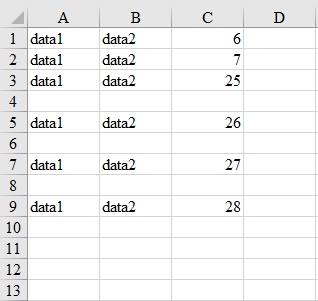Speed of Execution:
Our design executes at an appropriate speed. There are no speed issues at this point in time. Our project criteria does not include any overwhelming time constraints.
Accuracy:
The system was able to send a message every ten seconds (for testing) and we believe that it will also be able to send a message every hour. There were some issues in accuracy between the data that the PIC32 sent and the data that was being received but we believe this is not related to radio transmission but some way the transmitter or receiver are holding data in a buffer before and after transmission/reception. After several trials of writing to the CSV file, it is always the very first entry that inputs old buffer data. However, the subsequent entries are correct.

Sample data stores to CSV file in Excel, with old buffer data in first entry
Safety:
One potential safety issue is the voltage that is supplied from the data logger. The 9 pin I/O supplies both a 5V and 12V source to power peripherals. The 12V supply may be dangerous so it will be important for us to not leave a wire connected to this supply being exposed at the data site.
Another possible safety issue of this design is the radio frequency that we are using for transmission. However, 915MHz is safe, free, and legal to use for our purposes so we do not believe there are any safety issues.
Interference:
There potentially could be interference during data transmission if someone were to drive down the street emitting data around 915MHz but the chance of that could be slim. 915 MHZ is not a common frequency to use, and is well out of the range of common AM and FM radio stations which are much more common. We did not see any interference between regular transmission from the data logger site to the public safety building.
Usability:
Our design was meant to not be interfered with once it was built. It was designed to be sustainable and self sufficient. The one part that is usable to a person is the CSV file that is created and written to during data transmission. We believe that Professor Brandes will find this CSV file to be useful and an easier way to get data than having to manually grab the data down at the creek. The data he retrieves now is also stored into a CSV file so he has experience reading data in this format.
